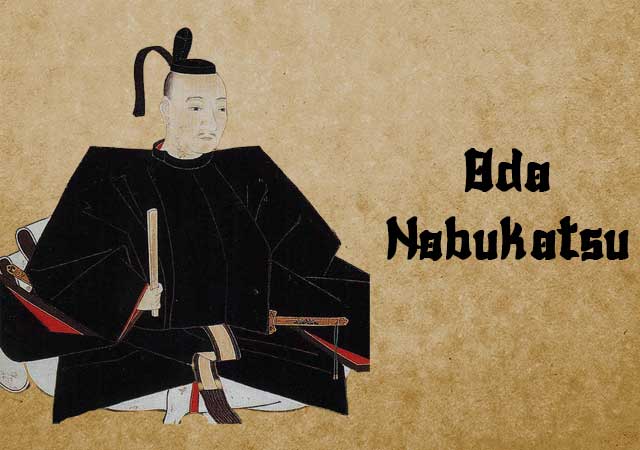
Oda Nobukatsu, a Daimyo and esteemed warrior, was born as the second son of Oda Nobunaga in Ko’ori Castle, situated in Niwa-Gun, presently known as Konan City of Aichi Prefecture, in the year 1558.
In 1570, following a brief conflict between the Oda and the Kitabatake clan of Ise Province (Mie Prefecture), Nobukatsu was adopted as the heir of the Kitabatake clan to restore peace. He married the daughter of Kitabatake Tomonori, but soon after the wedding, he orchestrated a series of ruthless actions. This included the murder of his father-in-law, the elimination of several key Kitabatake supporters, the imprisonment of the former Lord of Ise, and the complete usurpation of control for himself. Subsequently, Nobukatsu launched an unsuccessful invasion of neighboring Iga Province (also in Mie Prefecture). In response to his failure, Nobukatsu faced the wrath of his father, Nobunaga, and to preserve his authority, he was compelled to annihilate the entire region, including Iga and the remaining Kitabatake clan, along with their prestigious residences and Kiriyama Castle.
The 1582 coup known as the Honno-ji Incident resulted in the deaths of Nobukatsu's father and elder brother, Nobutada, sparking a dispute over succession between the two surviving brothers. Despite being born 20 days prior to Nobukatsu, Nobutaka, whose mother was a concubine, was considered younger due to Nobukatsu's noble-born mother. The brothers contended for their father’s legacy until the Kiyosu Kaigi, a meeting held at Kiyosu Castle, where Toyotomi Hideyoshi and other chief retainers of Nobunaga decided to nominate Nobutada’s infant son, Samboshi (later Oda Hidenobu), as the rightful heir.
Subsequently, Nobukatsu reclaimed his Oda lineage, relinquishing the Kitabatake name, and was appointed Lord of Mino (Gifu), Owari (Aichi), and Ise (Mie) provinces. Fearing his brother Nobutaka's growing influence, Nobukatsu allied with Toyotomi Hideyoshi to eliminate him, leading to Nobutaka's forced seppuku in mid-late June 1583. However, Nobukatsu later clashed with Hideyoshi over authority, prompting him to seek support from Tokugawa Ieyasu to overthrow Hideyoshi, culminating in the Battle of Komaki Nagakute in 1584. Despite initial hostilities, Nobukatsu eventually accepted Hideyoshi's peace offering, aligning himself with Hideyoshi and relinquishing his allegiance to Ieyasu.
Nobukatsu remained loyal to Hideyoshi, serving at the Siege of Odawara in 1590. However, he refused to surrender his domains when Hideyoshi redistributed his retainers' holdings, resulting in his forced retirement as a monk. Despite this, he was later pardoned and granted lands. Following Hideyoshi's death, Nobukatsu was entrusted with the guardianship of Hideyoshi’s infant son and heir, Hideyori, at Osaka Castle. However, in 1614, he betrayed the Toyotomi clan, surrendering to Tokugawa Ieyasu during the Winter Siege of Osaka. As a reward for his betrayal, he was granted the Uda-Matsuyama Domain in Yamato Province (Nara Prefecture), where he resided until his demise in 1630.
See also
-
Tachibana Muneshige

Tachibana Muneshige was born the eldest son of Takahashi Shigetane, one of the principal retainers of the Ōtomo clan and commander of Iwaya Castle. In childhood, he bore the name Senkumamaru. His early years coincided with a period of intense military confrontation between the Ōtomo clan and other powerful warrior houses of Kyūshū—namely the Shimazu, Akizuki, and Ryūzōji clans.
-
Tachibana Dosetsu
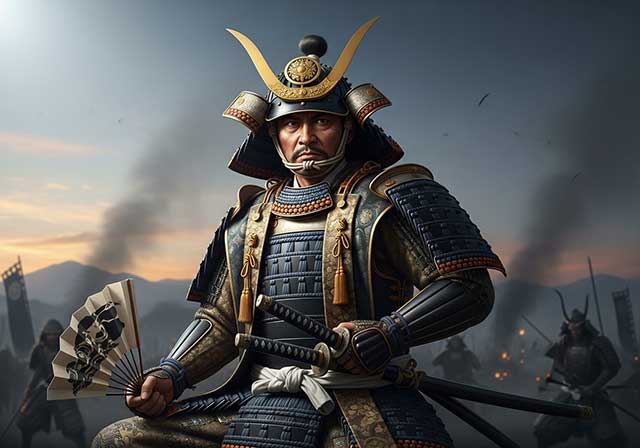
Tachibana Dōsetsu is the name by which Hetsugi Akitsura is more widely known; the name of this lineage is also found read as Hekki or Bekki. For a long period, Akitsura served the Ōtomo clan, the daimyō of Bungo Province, and took part in wars against the Ōuchi family, the principal enemies of the Ōtomo in northwestern Kyushu. In the 1560s, Akitsura seized the castle of the Tachibana clan, which had rebelled against the Ōtomo, and thereafter adopted the surname Tachibana. Around the same time, he took Buddhist vows and assumed the name Dōsetsu, which means “Snowy Road.”
-
Taira no Masakado
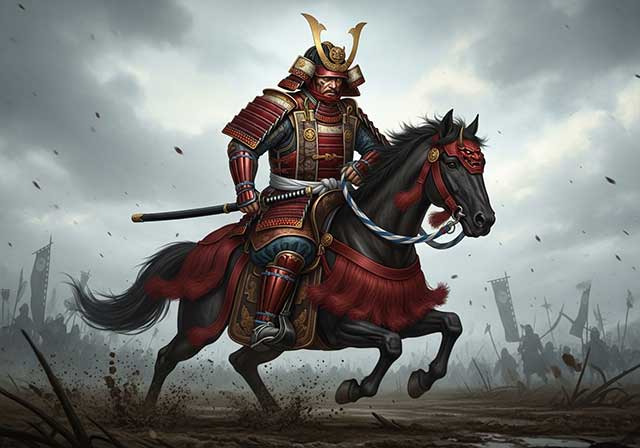
Taira no Masakado embodied the quintessential samurai of his era—self-assured, harsh, and unyielding. In his youth, he served in the palace guard and repeatedly proved his bravery while suppressing unrest. Thanks to these achievements, Masakado sought the post of chief of the capital’s military-police office (the kebiishi-chō), but he was rejected: by that time, nearly all court positions—now little more than privileged sinecures—were controlled by members of the powerful Fujiwara clan.
-
Sakakibara Yasumasa
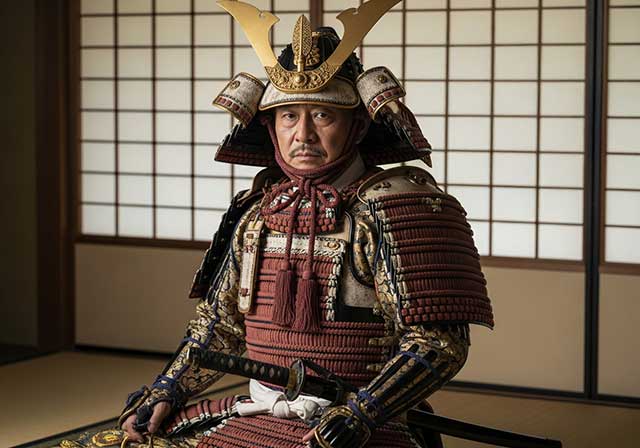
Yasumasa was the second son of Sakakibara Nagamasa and was born in Ueno in Mikawa Province. From a young age, he began serving Tokugawa Ieyasu and eventually rose to the position of one of his most trusted generals. His wife was the daughter of Osuga Yasutaka. Ieyasu first noticed the young Yasumasa during the suppression of the Ikkō-ikki uprising in Mikawa in 1564. Thanks to his demonstrated abilities, Yasumasa was granted the privilege of using the character “yasu”—the second character of Ieyasu’s own name—in his own. Although he was the second child in his family, he became his father’s heir, though the exact reasons for this remain unknown.
-
Sakai Tadatsugu
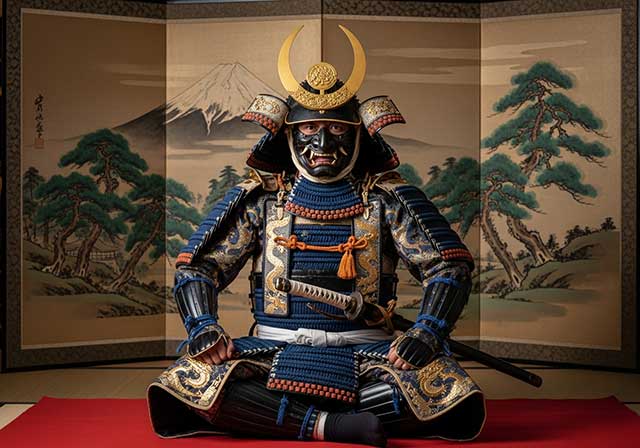
Tadatsugu was one of the most renowned generals serving Tokugawa Ieyasu. After Ieyasu broke ties with the Imagawa clan, Tadatsugu—an ardent supporter of this decision—was granted command of Yoshida Castle in 1565, which controlled the coastal road from Tōtomi to Mikawa. During the Battle of Mikatagahara in 1573, he held the right flank of the Tokugawa forces even when the troops sent by Oda fled under the assault of the Takeda army. In the Battle of Nagashino in 1575, he personally requested permission to carry out a night attack on the Takeda camp, which he executed brilliantly together with Kanamori Nagachika.
-
Ryuzoji Takanobu
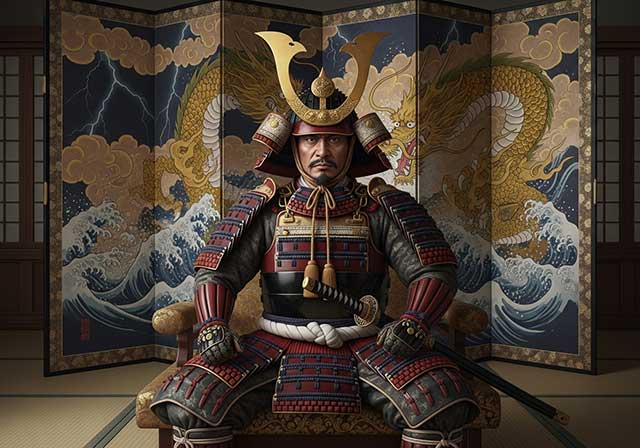
Takanobu was the eldest son of Ryūzōji Takaie and the great-grandson of Ryūzōji Iekane. His father was killed by a man named Baba Yoritiku in 1544. At a young age, Takanobu took Buddhist vows and received the monastic name Engetsu. However, around the age of eighteen, he returned to secular life, and in 1548, after the death of Ryūzōji Tanehide, he became the head of both branches of the Ryūzōji family.
-
Ouchi Yoshihiro
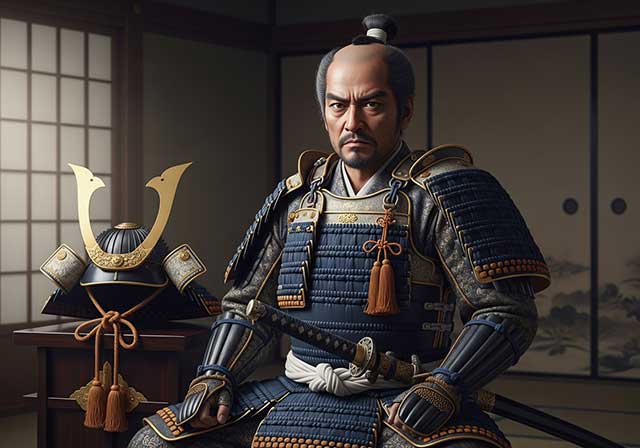
Ōuchi Yoshihiro was the second son of Ōuchi Hiroyo, who headed the Ōuchi clan in the western part of Honshu. In 1363, Shogun Ashikaga Yoshimitsu confirmed the Ōuchi family in the position of shugo of Suō and Nagato Provinces. In his youth, Yoshihiro assisted his father in strengthening the influence of the Northern Court on the island of Kyushu — they served under Imagawa Ryōsun, who had been tasked with subjugating the nine provinces of Kyushu.
-
Ouchi Yoshioki

Ouchi Yoshioki, the ruler of the provinces of Suo, Nagato, and Iwami, was one of the most capable military commanders and politicians of the late 15th and early 16th centuries. The son of Ouchi Masahiro, he governed from his residence in Yamaguchi in the province of Suo. In 1499, Yoshioki gave refuge to Shogun Ashikaga Yoshitane, who had been driven out of Kyoto by Hosokawa Masamoto. Shogun Yoshizumi, Masamoto’s protégé, ordered the lords of Kyushu to unite their forces against Yoshioki; however, they did not dare to do so, fearing the power of a man who by that time controlled six provinces. Having gathered a substantial army, Yoshioki marched from his native Suo toward Kyoto in order to restore Shogun Yoshitane to power.

